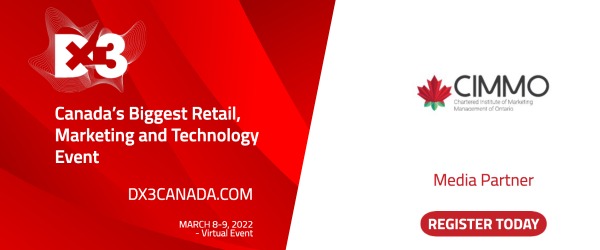Alignment starts at the top. It is the role of a leader to define a path forward, create movement, and align people with the organizational strategy. They are required to execute the plan toward achieving better-than-expected results. Alignment is the way to link planning to execution.
Research indicates that a significant percentage of a company’s shortfall is due to a lack of alignment. Often, ineffective alignment by leaders is at the core of their challenges.
An effective alignment is a critical tool for leaders. If the leader has an idea in mind and needs a group of people to execute it, then it is obvious they must bring clarity to their idea, and consequently, make it understood by all involved—for optimal, expected and planned-for results.
The question then becomes, “What are the key messages CEOs and their executive teams need to communicate in order to align their team and help them bridge the link between planning and execution?”
So how can we make sure, then, that these messages are clear and understood by everyone across the organization? The following elements should be considered when delivering a clear message:
A – Clarify, Plan and Define: To align the execution team, the owner of the idea should clarify it in their own heads, first. Following that, the idea can be converted into a plan—of action. When the plan is crystalized, tasks can be identified, and clear roles and responsibilities can be assigned. Once everyone knows their role and what they are required to do or achieve, the detailed expectations need to be defined and connected to a performance agreement following the individual’s commitment to do the job.
B – The Story: People are more likely to listen and retain stories—especially when they’re visual. This is the most effective way to attract and capture the attention of listeners. Employees naturally gravitate toward, and connect, with stories that have a meaningful impact on them.
To create a compelling story, ensure these 3Cs are employed: Capture, Connect and Create.
Capture: Share the big picture – Capture the audience with a strong vision about the plan, the “why” behind it and how they are connected to it. They should be able to visualize the plan in action and the role they will play in making it a reality.
Connect: Engage with the audience through understanding their personal and business drivers, and build the story focused on these drivers.
Create: Maintain a clear focus on well-founded, well-researched, insightful and relevant content. Create simple and clear instructions that are understood by all levels of the target audience.
C – Tell: Communication, in its varied forms, is the art of influencing people to willingly go on this journey with you. Leaders who effectively employ the 3Cs, naturally find engagement by others in joining their vision, their journey, as they now see the alignment between their talents, skills, abilities, and the greater work of the organization. They see a clear vision of where the group is going, and how they will get there.
As an art, communication is a skill that can be learned through discipline, open-mindedness, and practice. It is a careful, yet delicate mix of listening and speaking, and of engaging with empathy. As leaders, when we speak, listen or are silently present, how we communicate reflects our values, builds trust, and creates confidence in others. Effective leaders can clearly articulate their vision, communicate their expectations, and convincingly convey messages—with presence, power, and a sense of authority.
Understanding the link between communication and influence requires a thorough understanding of how people engage and react. As leaders, we must be conscious of others’ interpretations, how they decide, what they expect from us, how we can support them, and guide them toward a decision that aligns with the greater good.
Two simple tools that build this awareness, are:
The Decision Cycle and The Influence Cycle.
The Decision cycle is a sequence of steps that a person takes to reach a decision. It starts by recognizing there is a decision that needs to be made—by the person himself, and to collect information on the subject matter, as accurate information can be the key to outline the ideal situation, and simply representing the end goal or target you wish to achieve through such decision.
Once the individual has acquired the necessary salient information, and outline the ideal situation, this will be used as a base to compare past experiences and outcomes.
“Information’s pretty thin stuff unless mixed with experience.”
—Clarence Day (1874 – 1935), American Author.
Using the information collected, and experiences from which we can draw, we must then begin to compare options and their possible outcomes. The decision-maker naturally facilitates a “pros and cons” debate for each option. In doing so, we begin to understand the consequences of our actions—both favourable and unfavourable. Once we have weighed our options, the next step is to commit to a decision—and execute.
Finally, dealing with the outcome and potential repercussions of decisions taken. If this is the decision-making process, then how do leaders influence it? How do they help their teams navigate each stage, and provide strategic communication and advice to influence a positive outcome that aligns with the greater strategic goals of the organization?
Another key cycle to the puzzle is the influencer cycle, which closely follows and drives the decision-making cycle. First, an influencer must engage the decision-maker by targeting his personal and professional drivers. This can include corporate goals, personal values, and much more. Following the initial engagement, the influencer must fully understand the problem and current status of the decision-maker. Once they have done so, they can begin to define the ideal situation. This can be considered their target outcome or benchmark. Now that they have identified the current status, and ideal solution, they can begin to present the decision-maker with credible options and action plans to achieve the goal. The next step is to ask the decision-maker to commit to an action plan so they can begin the execution stage. And, finally, as mentioned above, they must act with empathy and address—and mitigate—any anxiety caused by the action plan. These can come in the form of the decision-maker “second-guessing” the decision.
Understanding the relationship between the alignment of people and strategy is core to the work and practice of an effective CEO to deliver better-than-expected results.














